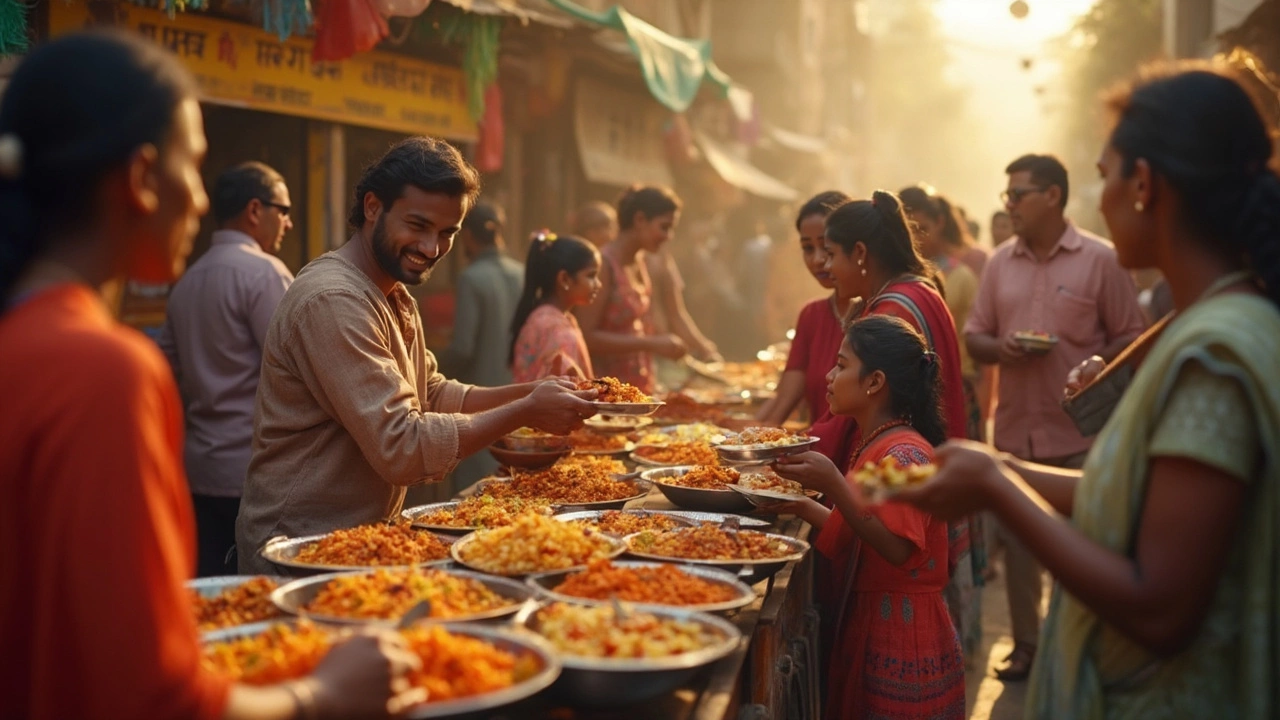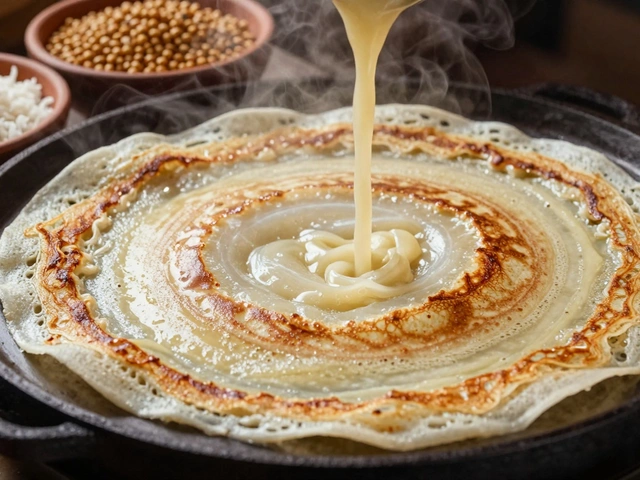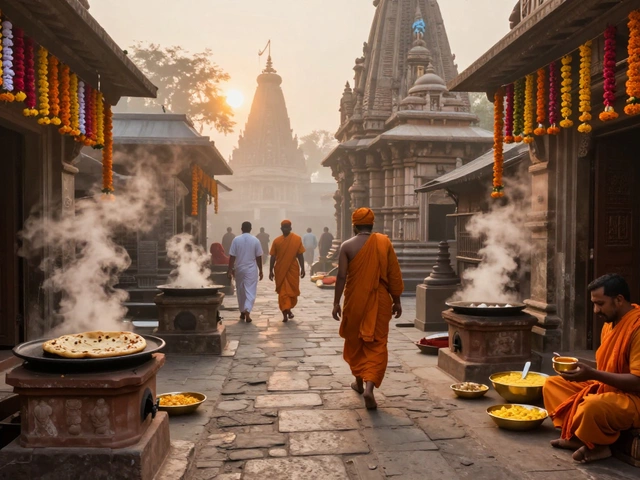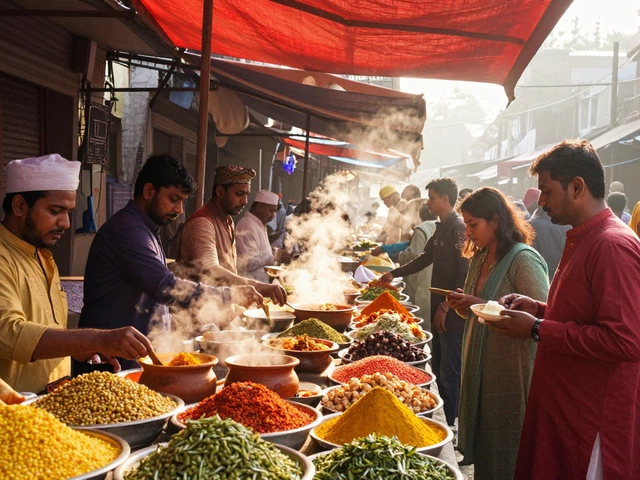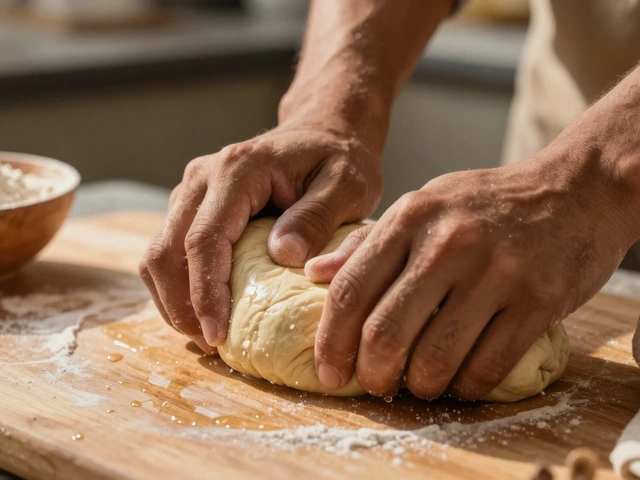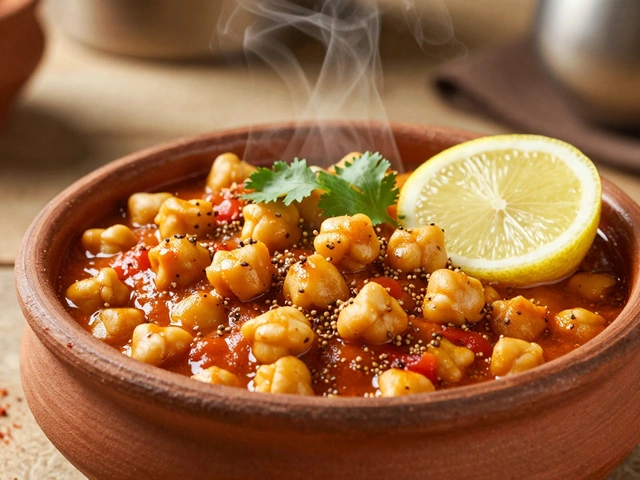Snacking isn’t just a habit in India—it’s a way of life. You’ll spot people munching everywhere: at roadside stalls, in buses, at work, even during festivals. But one snack races ahead of the rest, popping up in every region, every season, and every age group. A quick guess? It’s not chips or candies. It’s actually the unassuming chaat, especially bhel puri, that's constantly piling up on plates around the country.
Why bhel puri? For starters, it’s easy to make and super flexible. People love it because you can adjust everything—spiciness, tang, crunch—within seconds. It brings together puffed rice, veggies, chutneys, and a sprinkle of masala, hitting that sweet spot between healthy and tasty. Busy moms, office-goers, and street vendors all lean on bhel puri when hunger strikes between meals.
- The Ultimate Snack: Which One Takes the Top Spot?
- Why Indians Love to Snack (And When)
- Healthy Spin: Traditional Snacks with a Twist
- Chaat Craze: The Good, the Less Good, and the DIY Fix
- Street Food vs. Homemade: What’s Really Better?
- Smart Snacking Tips You Can Use Every Day
The Ultimate Snack: Which One Takes the Top Spot?
If someone asked you what snack gets eaten the most across India, you might think of samosas or pakoras first. But when you look at street food stalls, train platforms, and the millions of school lunch boxes, one thing keeps standing out—most eaten snack in India easily refers to bhel puri.
This isn’t just a random guess. A 2024 survey by the Indian Market Research Bureau showed that nearly 60% of people snack on bhel puri or similar puffed rice mixes at least twice a week. That’s more than any other single snack. The reason? It’s a snack that fits every budget, is ready in minutes, and keeps things light on calories if you skip fried extras.
Here’s a look at what makes bhel puri the king of Indian snacks compared to other common options:
| Snack | Main Ingredients | Avg. Calories (per serving) | Frequency (times/week per person) |
|---|---|---|---|
| Bhel Puri | Puffed rice, veggies, chutneys | 120-150 | 2.3 |
| Samosa | Potato, maida, spices | 250-300 | 0.9 |
| Papad/Chips | Potato, dal, oil | 200-220 | 1.1 |
As you can see, bhel puri is the clear winner when you look at how often it shows up on snack plates and how easy it is on the waistline. It’s filling but not heavy, has no deep frying, and gets a nutrition boost from raw veggies like onions, tomatoes, and coriander.
You might spot some local twists: in Mumbai, you’ll find sev puri or dahi puri, both cousins of bhel. In West Bengal, they call a spicier version jhal muri, and you’ll run into similar snacks from Gujarat to Chennai, all built around crunchy puffed rice and fast, fresh toppings.
Want a snack that’s light, quick, and packs a ton of flavor without the guilt? Bhel puri really does take the crown. If you’re choosing something for health and taste, plus wide availability, you can’t beat it.
Why Indians Love to Snack (And When)
Snacking in India isn’t just about killing hunger—it’s built right into the daily routine. For many, snacks are social fuel, conversation-starters, or that little reward to break up hours of work or study. You’ll notice that chai-time in the evening barely exists without a plate of samosas, pakoras, or a healthy chaat. Even morning tea usually comes with a handful of roasted nuts, mathri, or homemade munchies on the side.
Culturally, snacks have always had a place at the table. Festivals, family gatherings, even just catching up with friends, all have a dedicated snack moment. According to a 2023 survey by Mintel, over 65% of Indian adults snack at least twice a day—much more than the global average. Tea breaks, after-school cravings, and pre-dinner munchies all trigger those moments when the snack drawer (or street stall) comes alive. Busy routines at work or school have made quick snacks a staple since not everyone gets a full meal during the day.
Here’s a quick look at the most common snacking times across India:
| Time of Day | Popular Snacks |
|---|---|
| Morning (before breakfast) | Roasted chana, dry fruits, poha |
| Mid-morning (with first tea) | Mathri, biscuits, peanuts |
| Evening (with chai) | Samosa, pakora, most eaten snack in India - bhel puri, sev puri |
| Late night | Puffed rice, makhana, fruit chaat |
Another reason for this love? The endless variety. India has thousands of snack options, from light and fresh to spicy and deep-fried. Plus, most snacks are easy to share, making them perfect for visitors and family time. Next time you swing by an Indian household, don’t be surprised if the first thing offered is a plate of snacks and a cup of chai—it’s almost a rule.
Healthy Spin: Traditional Snacks with a Twist
Think Indian snacks, and your mind might jump straight to samosas, pakoras, or even sev puri. Some of these are tasty, but let's be real—deep frying is a one-way ticket to extra calories. But that doesn't mean you have to give up your favorites. Across the country, people have started giving their regular snacks a makeover—think less oil, more color, and way more crunch from veggies.
Take bhel puri, the most eaten snack in India. It’s already a solid choice because it’s built on puffed rice. To make it even healthier, swap out fried sev for roasted chana (chickpeas), and double up on tomatoes, onions, and grated carrots. Sometimes people add pomegranate seeds for extra sweetness and vitamin C. No need for bottled tamarind chutney loaded with sugar when you can mix your own with dates and a pinch of jaggery.
Other classics are also getting a healthy update. Make your own chaat at home with baked papdi instead of regular ones. Swap fried samosas for an air-fried or baked version—honestly, they turn out just as crispy. If you love dhokla, stick to steamed options and add spinach or beetroot to the batter for more nutrients.
- Roast instead of fry—think peanuts, chickpeas, or makhana (fox nuts).
- Add more fresh veggies and leafy greens to your chaat or sandwiches.
- Use Greek yogurt instead of cream or mayonnaise for raita or dip.
- Pick homemade chutneys over store-bought ones—they’re fresher and have less sugar.
These small changes aren’t hard to pull off, but they go a long way. You’ll still get the flavor and fun of snacking, without piling on empty calories. Plus, you’re sneaking extra protein, fiber, and vitamins into something you already love.
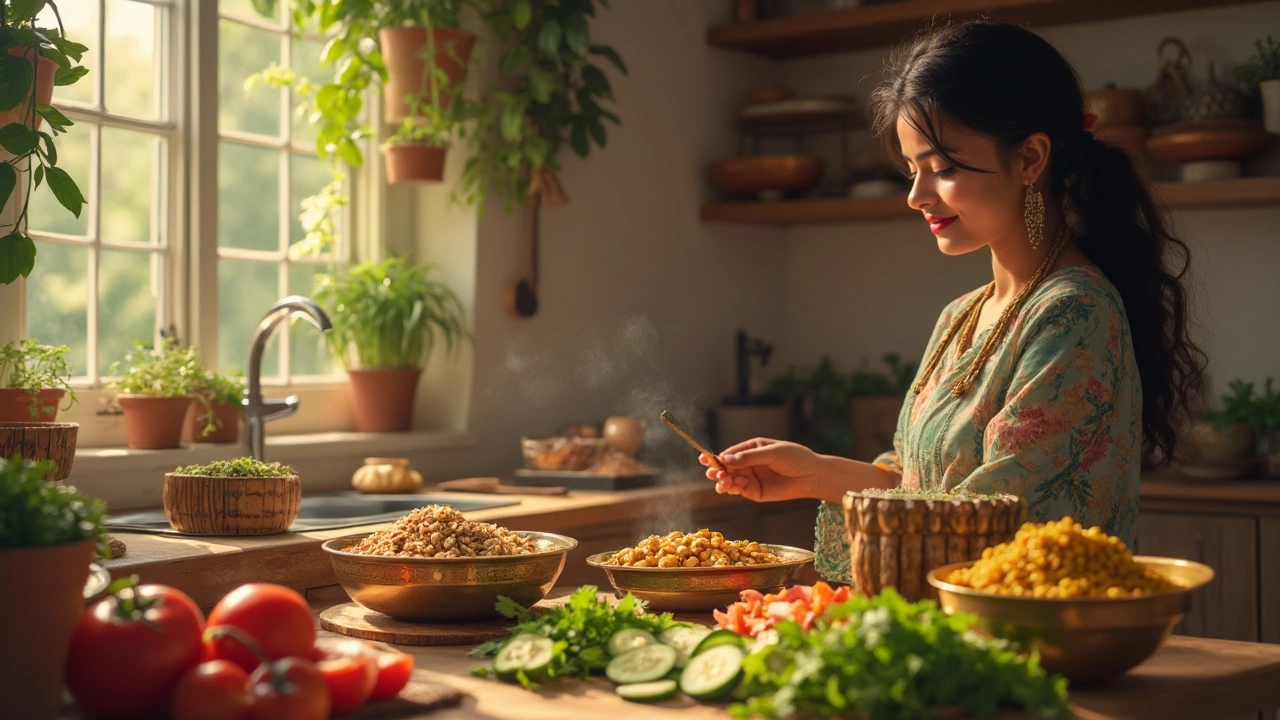
Chaat Craze: The Good, the Less Good, and the DIY Fix
Chaat is everywhere—bhel puri, papdi chaat, pani puri, sev puri, and dahi puri. You’ll find folks lining up at roadside stalls, especially in the evenings, with plates heaped with these local favorites. While chaat is the most eaten snack in India and a legit winner in the taste department, let’s break down what’s working for your health and what’s not.
The good news? Chaat packs in plenty of veggies like onions, tomatoes, boiled potatoes, and fresh coriander. Bhel puri, for example, starts with puffed rice (low in fat) and usually skips deep frying. The tangy sauces use tamarind and coriander, which bring antioxidants and flavor without piling on artificial stuff. Chaat fills you up fast and encourages sharing, thanks to its portion sizes and mix of textures.
But there’s a flip side. Some versions, like papdi chaat, use deep-fried flour bases. And let’s be honest, the chutneys can be a sugar bomb if store-bought. Even the classic sev on top is fried, which can turn a light snack into a calorie trap. If you’re watching your salt intake or dealing with heart problems, the extra chaat masala and generous use of salt is something to look out for.
Want to keep your chaat both tasty and healthy? Try this quick DIY fix at home:
- Swap fried papdi for homemade baked crackers or roasted whole wheat khakhra.
- Go easy on the sev—use roasted chana dal, unsalted peanuts, or just a sprinkle of sev for a nice crunch.
- Make chutneys at home so you control the sugar and salt. Use dates for sweetness in tamarind chutney instead of jaggery or sugar.
- Load up on raw veggies. Go big with tomatoes, cucumbers, carrots, and even sprouts for more fiber and vitamins.
- Balance the spice and tang. A squeeze of fresh lemon gives plenty of flavor without the sodium bump from too much chaat masala.
With a little planning, you can enjoy your favorite chaat at home without worrying about extra calories or hidden additives. Chaat doesn’t have to be just a street treat—it can fit perfectly into a smart, healthy snacking plan.
Street Food vs. Homemade: What’s Really Better?
Indian street food has a special place in our hearts. That feeling of sharing a plate of pani puri with friends or grabbing some bhel puri on a busy street is unbeatable. But let’s talk facts: is it really the best choice for your health, or does homemade win?
Street snacks are cheap, fast, and full of flavor, but they come with some big downsides. Studies show that almost 60% of Indian street food samples tested in major cities had some contamination. Not super surprising since food is often exposed to dust and handled by hand without gloves. Oil reuse is common too, which bumps up unhealthy fats. Then there’s portion control—street vendors love to pile it high, and it’s easy to eat more than you planned.
Homemade snacks flip the script. You get to pick the ingredients and prep style. Want to use less oil? No problem. Skip the extra sev or chutney if you’re watching your salt? Totally doable. The homemade version of most eaten snack in India (think bhel puri, chaat, or upma) can be packed with veggies, roasted nuts, and even sprouts for a protein kick. Plus, it’s easier to keep an eye on hygiene and freshness.
Check out this side-by-side to see how they really stack up:
| Street Food Bhel Puri | Homemade Bhel Puri | |
|---|---|---|
| Calories (per serving) | Approx. 250 | Approx. 150–200 |
| Chemical Preservatives | Possible (chutneys, sev) | Rare/None |
| Oil Quality | Often reused | Fresh; can use olive or mustard oil |
| Veggie Servings | 1–2 | 2–3 |
| Hygiene | Can be questionable | High (if kitchen is clean) |
| Customization | Low | Full control |
If street-side flavors are what you crave, there’s a fix for that at home. Use the same combo of puffed rice, tangy chutney, and crunchy veggies. Sprinkle chaat masala, and you’re nearly there. Try baking or air-frying your puris or sev to cut back on extra oil. Swap out fried papdi for whole-grain or baked crackers if you want to go even lighter.
- Step up hygiene by washing everything well.
- Taste test as you mix—go easy on the salt and chutney.
- Add a handful of roasted chickpeas, peanuts, or sprouts for protein.
You don’t have to give up that classic taste to eat better. Homemade brings the flavor and gives you peace of mind about what you’re actually putting in your body.
Smart Snacking Tips You Can Use Every Day
Snacking is fun, but it’s crazy easy to go overboard on salt, sugar, or fried stuff without even realizing it. Here’s how you turn your daily bites into something healthier, without losing out on taste or crunch.
First things first: portion control matters. Most folks don’t measure their snacks and end up eating double, sometimes triple, what they really wanted. Use smaller bowls or plates so you naturally cut down the amount. A recent survey from India’s National Institute of Nutrition found that switching to small dishes dropped average snack intake by up to 25%—simple, but effective.
- Pick whole ingredients: Swap out refined stuff like white bread or namkeen for roasted chana, puffed rice, or mixed nuts.
- Go for homemade over packaged: Even five minutes in your kitchen can save you loads on salt and oil. Bhel puri or sprouts chaat take less time than a delivery order.
- Ditch the sugary drinks: If you need something with your snack, plain nimbu paani (lemon water) or buttermilk is your best friend.
- Add veggies: Just toss in tomato, cucumber, and onion to whatever you’re eating. Fiber fills you up faster and keeps your gut happy.
- Watch the timing: Don’t snack late at night if you can help it. Studies show eating snacks before 7 pm is easier on your stomach and metabolism.
If you really want to know what works best, check out this easy table with quick snack swaps that make a real difference:
| Common Snack | Swap With | Healthier Because |
|---|---|---|
| Potato Chips | Roasted Makhana | Less fat, more protein, gluten-free |
| Namkeen | Roasted Chana | High in protein, less oil, keeps you full |
| Samosa | Veggie Sprouts Chaat | Rich in fiber and vitamins |
| Sweet Biscuits | Homemade Dhokla | Low sugar, steamed not fried |
| Sugary Colas | Nimbu Paani / Buttermilk | Zero added sugar, hydrating |
Keep it simple, listen to your body, and focus on balance instead of perfection. And if you mess up and eat that extra samosa, don’t stress—just aim for a better choice next time. Remember, the most eaten snack in India like bhel puri gets its goodness from fresh, simple ingredients and the right balance, not from a packet.
